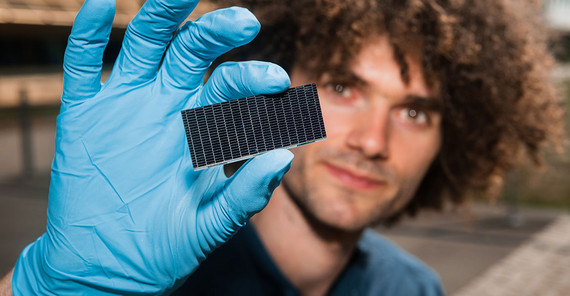Satellites make our lives on Earth more comfortable and enable technological progress. But these artificial space bodies need a lot of energy and are almost always powered by solar cells. Unfortunately, space radiation, which consists of high-energy particles such as electrons and protons, damages the almost unprotected components. This results in microscopically small defects in the perfect lattice of the solar cell’s semiconductor, which slowly but surely weakens the solar cell. Together with my “Freigeist” Junior Research Group at the Chair of Soft Matter Physics and Optoelectronics, we are developing solar cells from “flexible” perovskites. This is a new semiconductor material which, in contrast to conventional semiconductors such as silicon or gallium arsenide, can repair itself. After exposure to radiation or damage, lattice defects “heal” on their own thanks to a flexible lattice in which ions can move at high speed. In this way, they allow (in the medium or long term) stable solar cells for outer space.
But these highly efficient perovskite solar cells would also be practical on Earth. In a tandem setup, which combines two perovskites to absorb either short or long wavelengths, sunlight can be used even better. We are already exceeding the efficiency of conventional silicon modules with a material that can repair itself and that is at the same time thinner, lighter, and can be produced with a smaller CO2 footprint. This is ideal for switching completely to renewable energies! In the future, solar cells – printed on ultra-thin film, rolled out, or folded over a large area in space – could generate energy from sunlight for our astronauts on the International Space Station or even entire lunar or Martian cities. The use of thin perovskite solar cells saves weight and launch costs. Even solar parks, which “beam” energy generated in space to Earth by microwave, are becoming more likely.
This text was published in the university magazine Portal – One 2025 “Children” (PDF).
Dieser Text erschien im Universitätsmagazin Portal - Eins 2025 „Kinder“.

